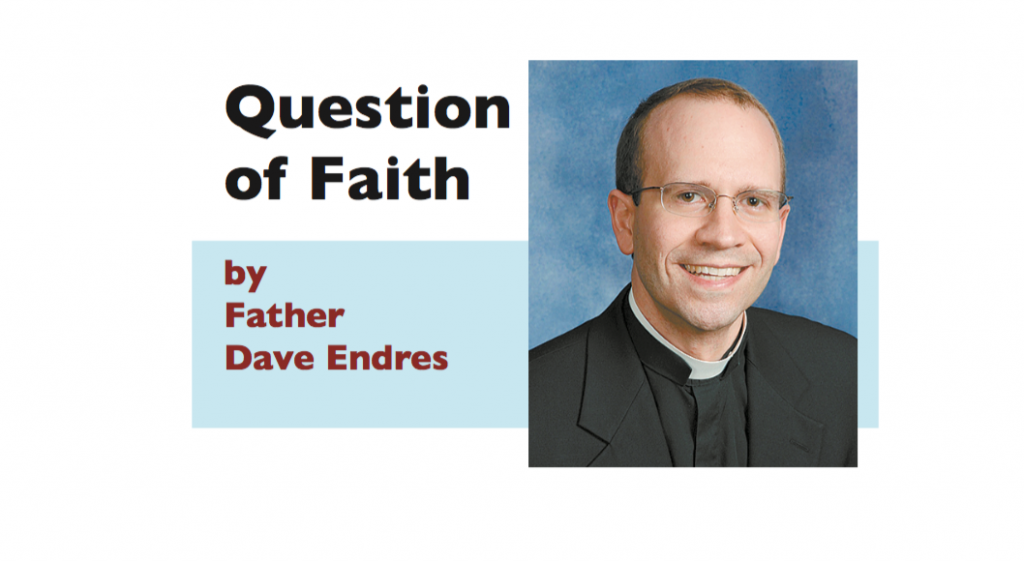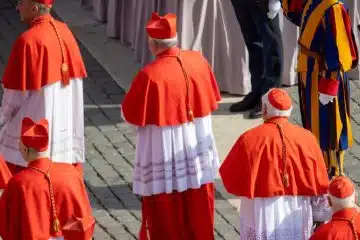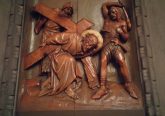Father Endres for June: Does the Holy Spirit have a gender?
 Q: A friend of mine refers to the Holy Spirit as “she.” I have heard the theory that the Holy Spirit is a feminine manifestation of the divine. Is this consistent with Catholic teaching?
Q: A friend of mine refers to the Holy Spirit as “she.” I have heard the theory that the Holy Spirit is a feminine manifestation of the divine. Is this consistent with Catholic teaching?
A: God transcends gender, which is to say that the divine is neither male nor female. However, God is a person, not an “it” and so it seems appropriate to refer to, relate to, and image God in terms of gender.
But what about each of the persons of the Trinity? Can each be individually considered as male or female? God the Son, Jesus, took on flesh as a male, biologically, which is to say that God entered time and space as a man. And though without gender, the Godhead was called by Jesus “abba” (a familiar term for father). Jesus taught His followers to begin their prayer to God using the words, “our father.”
While it is less common to ascribe any gender to the Holy Spirit, the Spirit has been viewed by some as feminine, at least partly because of the gender of the word for the Spirit. The Greek word for the Spirit, “pneuma,” is neuter. The Latin word, “spiritus,” is masculine. But the Hebrew and Syriac words, “ruach” and “rucha,” are feminine.
When Jesus revealed to us the Trinity, as in Matthew 28: 19 (baptize “in the name of the Father and of the Son and of the Holy Spirit”) it is only the last person of the Trinity who seems not to be assigned a gender. Yet Jesus himself spoke of the Holy Spirit in masculine terms when He said to His disciples, “When he comes, the Spirit of truth, he will guide you to all truth” (John 16:13).
The members of the early church frequently used masculine pronouns to describe each of the persons of the Trinity, including the Spirit. Acknowledging the theological difficulties, they did not think of the Trinity as being composed of two males and one female or two males and one neutered person. Most often in early Christian theology, because the Spirit proceeds “from the Father and the Son,” the Spirit, too, was thought of as male. Since the Trinity’s members share a common substance, are coeternal, and coequal, it is difficult to argue for the Spirit’s manifestation in feminine terms if the other persons are conceived of as male.
The practice of the church, in its use of language for teaching and worship, follows this understanding. The Catechism teaches that we cannot properly assign a gender or genders to the divine, but the text retains masculine pronouns in speaking about God: “He is neither man nor woman; he is God” (239). But when in our use of language, God must be assigned a gender, the Holy Spirit is referred to in masculine terms.
Though the Holy Spirit is not feminine, this does not mean that we cannot consider both masculine and feminine images of God, especially as we relate to the divine in terms of paternal and maternal qualities. As the Catechism relates, “The language of faith thus draws on the human experience of parents, who are in a way the first representatives of God for man.” This allows us to image God as “father,” acknowledging Him as “origin of everything and transcendent authority” and also relate to the maternity of God which emphasizes “God’s immanence, the intimacy between Creator and creature” (239).
God is neither male nor female, yet at the same time, we can draw closer to God by relating to and imagining God through gender as long as we recognize the limitations of our understanding and use of language in describing the divine.
Father Endres is dean of Mount St. May’s Seminary of the West and the Athenaeum of Ohio. Send your question of faith to [email protected].













